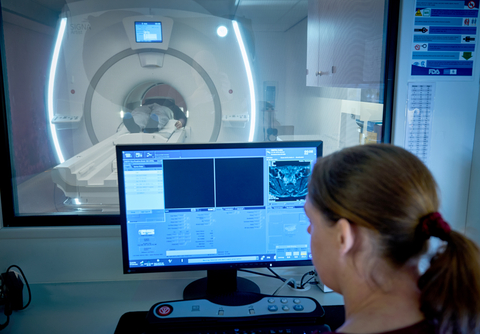GE HealthCare has announced successful results from the Phase I clinical trial of its novel manganese-based MRI contrast agent, signalling a potential breakthrough in medical imaging. The findings, presented at the bi-annual Contrast Media Research symposium in Oslo, Norway, indicate that the agent was well tolerated, with no serious adverse events or dose-limiting toxicities reported.
This development could provide radiologists with a safer alternative to gadolinium-based contrast agents, commonly used in MRI imaging to enhance the visibility of abnormal structures or tissues. Unlike gadolinium, manganese is a naturally occurring element in the human body and is efficiently eliminated, reducing concerns about long-term retention and environmental impact.
MRI contrast agents are critical tools for improving the clarity of medical images, helping to distinguish between healthy and pathological tissues. However, the use of gadolinium has raised safety concerns, particularly due to the potential accumulation of the metal in body tissues and its environmental implications. GE HealthCare’s new agent, a macrocyclic, extra-cellular, manganese-based compound, is designed to offer similar diagnostic capabilities as gadolinium-based agents, while mitigating these risks.
The Phase I trial, conducted at Oslo University Hospital’s Rikshospitalet, concluded that the manganese-based agent performed comparably to gadolinium in enhancing signal intensity, while being well tolerated by participants. The trial’s results will inform ongoing clinical development, with future trials planned to further evaluate the safety and efficacy of the agent.
Dr Paul Evans, Head of Global Research and Development at GE HealthCare’s Pharmaceutical Diagnostics division, described the results as “encouraging” and highlighted the company’s commitment to advancing contrast media innovation. “We are excited by these Phase I results and look forward to the next steps in the development process. This is part of our broader effort to improve patient outcomes across healthcare pathways,” Evans said.
The agent also offers potential environmental benefits, as post-patient excreted gadolinium has been found in water sources, raising concerns about its long-term environmental impact. The use of manganese, which is naturally excreted by the body, could reduce the ecological footprint of MRI procedures.
Dr Robert McDonald, a radiologist at the Mayo Clinic and board member of the American College of Radiology’s Contrast Media Safety Committee, praised the development. “GE HealthCare’s manganese-based agent offers a promising alternative to gadolinium, particularly for vulnerable patient populations. It provides comparable imaging capabilities while reducing the risk of tissue deposition and potential environmental harm,” McDonald explained.
GE HealthCare has deep roots in Norway’s contrast media industry, with its Oslo-based facility marking 150 years of operation. The company’s Lindesnes facility, celebrating its 50th anniversary, also plays a crucial role in producing active pharmaceutical ingredients for the healthcare sector.
Kevin O’Neill, President and CEO of GE HealthCare’s Pharmaceutical Diagnostics segment, noted that the development was a testament to Norway’s legacy of innovation in diagnostic imaging. “As we celebrate these milestones, the Phase I results underscore the importance of Norway’s heritage in improving patient outcomes globally. We aim to provide radiologists with more options, ensuring personalised care and addressing unmet patient needs,” O’Neill said.
GE HealthCare’s Pharmaceutical Diagnostics division is a global leader in imaging agents, supporting 120 million procedures worldwide each year. The company’s contrast media products are used across a range of imaging techniques, including MRI, X-ray, and ultrasound, to enhance clinical images and improve diagnostic accuracy.


